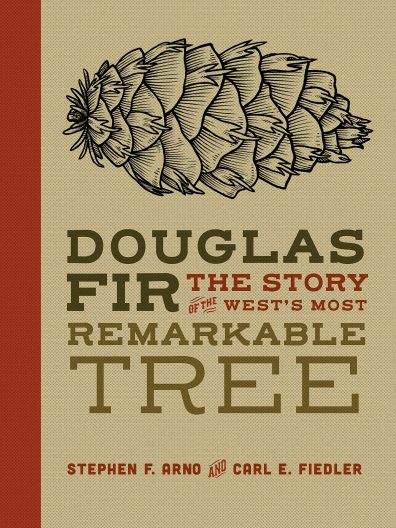 There are many rare and unusual trees and shrubs in the Washington Park Arboretum. Standing aside (and sometimes out-competing) these wonderful exotics is the native matrix of trees, especially tall conifers. Perhaps the most iconic of these is the Douglas-fir (Pseudotsuga menziesii). “Douglas Fir: The Story of the West’s Most Remarkable Tree” is a comprehensive new book by Stephen Arno and Carl Fiedler about this tree native from northern British Columbia to the high mountains of Mexico.
There are many rare and unusual trees and shrubs in the Washington Park Arboretum. Standing aside (and sometimes out-competing) these wonderful exotics is the native matrix of trees, especially tall conifers. Perhaps the most iconic of these is the Douglas-fir (Pseudotsuga menziesii). “Douglas Fir: The Story of the West’s Most Remarkable Tree” is a comprehensive new book by Stephen Arno and Carl Fiedler about this tree native from northern British Columbia to the high mountains of Mexico.
There two distinct varieties of the Douglas-fir. The coastal tree (P. m. var. menziesii) that we are familiar with in Seattle and is found along the coast south to the California Bay Area. The inland variety (P. m. var. glauca) has an even wider distribution east of the coastal ranges and into the Rocky Mountains. The ecological success of both varieties highlights their adaptability, supported by an extra set of chromosomes when compared to most of the other West Coast conifers. In simple terms, this means the “Douglas-fir is nature’s all-purpose tree.”
This malleable nature has caused more than its share of nomenclature issues. Is it a fir? A pine? A spruce? The answer is none of the above. The genera Pseudotsuga translates as “false hemlock” – a rather unfortunate compromise. Even the common name has varied, although the Seventh International Botanical Congress in 1950 settled on “Douglas-fir” and that form is used throughout this book (although the hyphen is oddly missing from the book’s title).
The coast Douglas-fir is one of the tallest plant species in the world. Its loftiest example (at 327’) currently ranks number three behind the height champions of the Coast Redwoods (Sequoia sempervirens at 380.3’) and Eucalyptus regnans (329.7’) of southeastern Australia. An especially engaging part of this book discusses the credible possibility of historical Douglas-fir specimens, taken down for lumber one hundred or more years ago, that likely exceeded 400’ in height.
While Euro-Americans quickly recognized the value of Douglas-fir wood for building, the indigenous people throughout the tree’s vast range were the first to use its timber this way, but they had many other uses, too. All parts of the tree are valuable and were used for preserving and flavoring food, for medicine, for crafting tools, in sacred ceremonies, and most importantly, providing heat. “Both varieties of Douglas-fir historically fulfilled myriad roles for native peoples and were the overwhelming choice for one critical daily need: fuel for their fires.”
Excerpted from the Spring 2021 issue of the Arboretum Bulletin